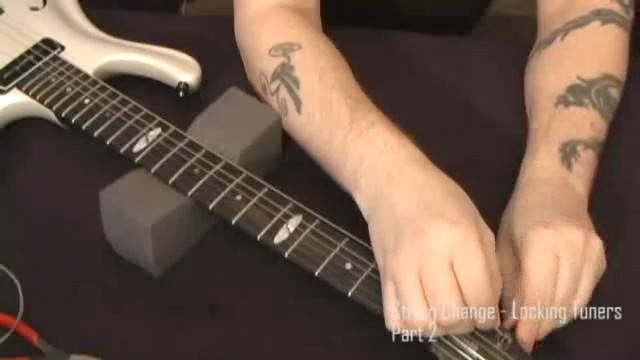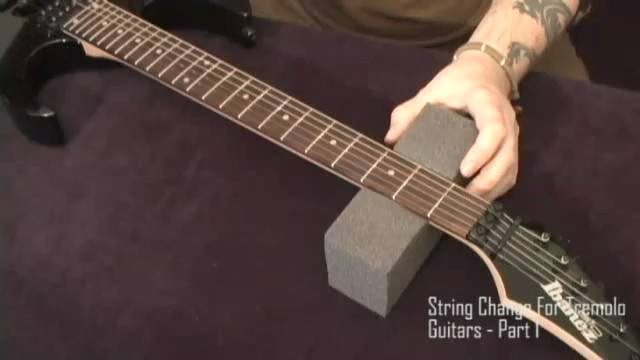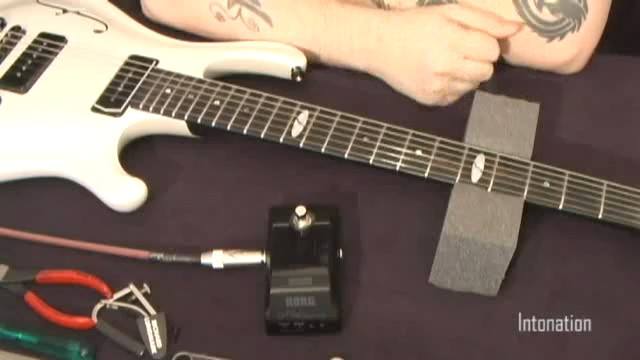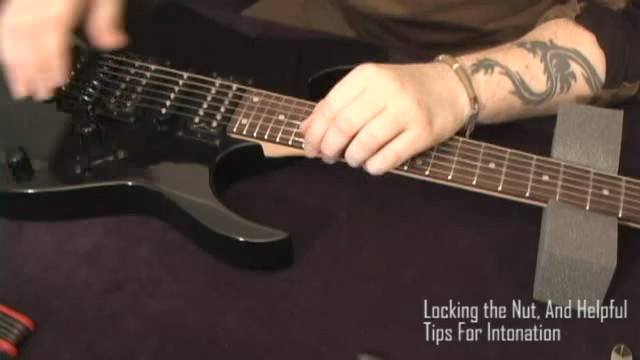New Strings
A fresh set of strings is always a relief to play, as the feel fresh, slick and you don’t get caught on them whilst playing (sort of a like a satin-finished neck vs. a sticky gloss finish). Many player change strings on an almost daily basis when they gig often. Also, regular string change can be necessary if you suffer from “acid-hands”, that is moist hands and fingers that tend to kill the strings rapidly. For those of us blessed with dryer hands, a string can last many times longer. There is of course also all the new brands of coated strings, especially appropriate for those with moister hands, or that often gig in a humid climate (near the sea or similar). For players with dry hands, and that live in a climate not corrosive to the strings, coated strings will more than often feel overly soapy and be a hindrance in playing, rather than a benefit.
A fresh set of string also sounds better for two reasons; 1. That the string is uniform and resonates more evenly (a worn out string is uneven due to pick and fret wear and thus resonates unevenly). 2. A new string has more overtones and thus covers up the natural tone of the string, thus “masking” up bad intonation (no guitar intonate perfectly as we will find out later). Actually, a older string intonate more “true”, but sounds worse because there is nothing to mask up the inconsistencies of the guitars un-tempered intonation (more on this later).
String Change for regular tuners
Time to change the strings! How the string should be fasten around the post, depends on what type of tuners your have on your guitar. Once again, if you have a tremolo-equipped guitar (such as an Ibanez), check the tremolo section.
“Regular” tuners: If you guitar has regular tuners, by which I mean the standard type, with a hole straight through the post, plain and simple, you follow this procedure (or just watch the video =).
1. After attaching the string to the bridge (be it Strat, LP or Tele-type bridge), thread it through the hole in the peg head, through the tuning shafts hole.
2. You need to leave a bit of string length to wind around the tuner. The way you do this is by holding the string around the middle of the fret board grabbing it with your thumb, and raising it until you have your fingers in a right angle towards the fret board. The string should be positioned just above the beginning of your fingers, in the palm of your hand. While holding this, use your other hand to bend the string protruding from the peg head around its shaft. You should always bend the string inwards to the middle of the headstock.
3. Bring the string back towards the center of the peg head, down towards the fret board, and back under the string.
4. Keeping tension on the string with both hands, pull the string up over itself. This is a very crucial step, to avoid gaps from forming.
5. While you continue to hold tension on the string, and hold the upwards-pointed part with one of your hands (once again, check the video!) start to wind the string around the shaft. The string should be wound down the shaft to increase the strings angle over the nut, and to put upwards pressure on the “locked” angle.
If you have done this correctly, the string will now be locked against the post, by the tension of the string itself. This is a very effective method of fastening the string, and for fixed bridge guitars, just as effective as a locking post for staying in tune.
Remember, when changing strings, make sure that all nuts and bolts are firm and tight, and that nothing has come loose. Also, once again play in and stretch the strings for a long period of time, I would recommend you play the guitar, bend and stretch, for at least a day before going into the process of intonation.



































